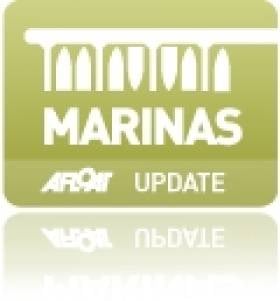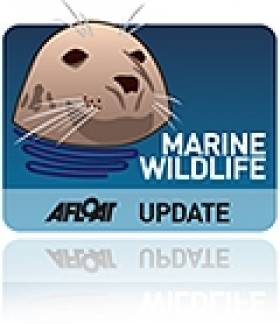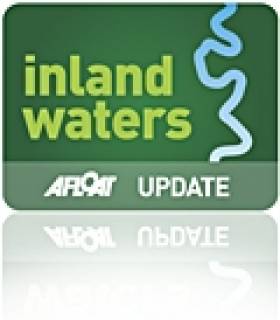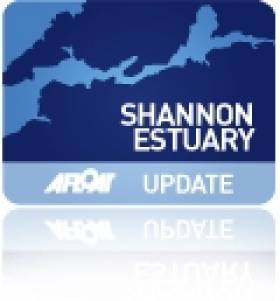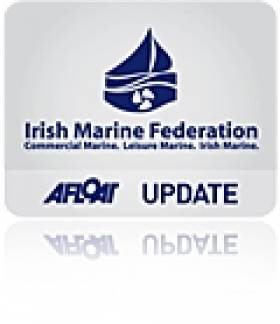Displaying items by tag: estuary
#kilrushmarina – Kilrush Marina recently celebrated 12 months under new ownership having carried out an extensive upgrade and modernisation to the facilities costing in excess of €1m.
As Afloat.ie reported back in March, Kilrush Marina was taken over in July 2014 from the semi state company Shannon Development who oversaw the construction of the 120 berth marina in 1991. Included in the work was the overhaul of the lock gates which included shotblasting and painting, structural repairs, new seals and an automated system to make them 24 hr accessible.
The pontoon electrics were replaced, an automated 24hr fuel system was installed,wi fi accessible on all pontoons. Security was upgraded with comprehensive CCTV and automated gates on both pontoons and boatyard. The Marina Centre building was refurbished, and new showers installed in the changing rooms, the Marina entrance and car parks were landscaped and tarmacked.
In the boatyard, the drainage was redone,shed roofs repaired and a 16 ton hydraulic boat trailer purchased to compliment the existing 45t–travel hoist.
The final job was dredging the access channel, which because its in a Special Area of Conservation took a lot of time and effort to get permission.
However its finally done and provision is now in place for annual maintenance dredging.
Kilrush Marina is the only full service marina on the west coast offering a full range of boatyard and berthing options and is easily accessible from both Shannon Airport 45 minutes away and the motorway network 30 minutes away.
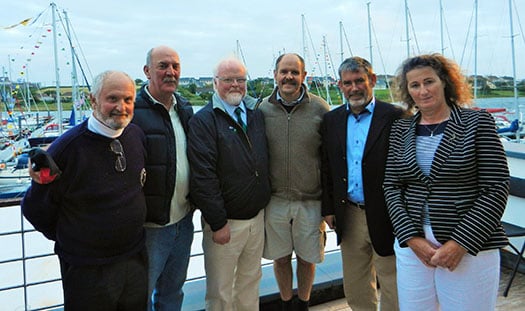
(L to R) Adrian O'Connell, Commodore Royal Western YCI , James Mc Cormack Commodore, Foynes YC, Pierce Purcell, Irish Sailing Association, Richard Hurley, Commmodore Tralee Bay SC, Louis Keating Managing Director L&M Keating, Kim Roberts, Kilrush Marina Manager.
Saving the Seabed May Not Cost the Earth After All
#seabed – A British government decision to slash 75 per cent of a proposed network of marine conservation zones (MCZs) intended to save seabeds and estuaries in England from being damaged by commercial and recreational activities, has been criticised by professional fishery managers.
The Department for Environment, Food and Rural Affairs (Defra) is proposing to go ahead with only up to 31 of 127 zones recommended by its advisors. It says it would be too expensive to set up more.
Responding to the watered-down proposals, the Institute of Fisheries Management (IFM) said it was "extremely disappointed" no more zones would be designated in the near future. Instead it called for "a clear timetable" for more, especially close inshore and for early discussions on how to manage and enforce them.
One zone the institute wants brought forward is in the Thames estuary which it says is one of the best studied estuaries in the UK, containing a wealth of well documented features fully meeting the MCZ criteria.
The estuary had long been a showcase for sustainable development. Most of the development challenges cited for delaying it were already being dealt with in a fully sustainable manner.
Another is the Alde-Ore estuary near Felixstowe, Suffolk. This contains a recruiting population of smelt (Osmerus eperlanus) a recognised MCZ flagship species. New evidence suggests a spawning run by these into the freshwater reaches of the estuary.
The institute agreed with the fisheries minister Richard Benyon that enforcing remote offshore zones could be costly, particularly if fishermen from other countries fished there.
Inshore, however, the use of sound and accessible science in selecting zones would engender strong commitment to self-enforcement among local sea users. Policing costs, including intelligence gathering, could then be "very low indeed."
There were already very good examples of self-enforcement in shell fisheries. In estuaries on the Thames and in Devon trawling restrictions had been maintained in an inclusive and coherent manner, at low cost.
Because Defra had not said how the zones would be managed and enforced the marine industry had, in some cases, provided "its own worst case scenarios," of the costs.
"This is an understandable reaction," according to Steve Colclough, chairman of the institute's marine section, "but it tends to militate against further designation [of more zones] in the near future."
Because of the uncertainty over management, some anglers felt that if estuaries became conservation zones they would be excluded from fishing in them. This was a factor in a number of cases and reassurances about a balanced approach carried little weight.
The institute was also disappointed the proposals did not refer to the socio-economic benefits of conservation zones. Around the world there was evidence they brought significant long-term benefits to fisheries, tourism and recreation. There had been early benefits to fishermen in recent examples of marine protection in England such as in Lyme Bay and Port Erin Bay on the Isle of Man.
Mr. Colclough said the institute was concerned about the balance of evidence and inconsistencies in some zone decisions. The rationale that estuaries, mudflats and salt marshes were some of the most productive aquatic ecosystems, was built into the reasoning for selecting some zones but not others.
The importance of conservation species such as the smelt had only been used in some decisions. For example, the Medway estuary was put forward for designation now, but data presented on the presence of a self-supporting population of smelt was not in the proposal. The institute said it was frustrating to be unable to see clearly where and how high quality information which it had provided had been used in making decisions.
"Such action tends to reduce the commitment and engagement so vital for success of these projects... We were promised [the MCZ process] would be transparent and fair, based on good science... Unfortunately we and others have noted specific data errors" which damaged the credibility of the whole process.
"These may seem small issues, but not to users who already feel threatened by the whole process. Understandable fear of the unknown quickly becomes antagonism."
As a professional body promoting more sustainable fisheries management, the Institute of Fisheries Management has a wealth of relevant experience, Mr. Colclough added, and said he looked forward to positive future engagement with Defra and others.
River Barrow Has Potential for Tourism
#INLAND WATERWAYS - A new study on the River Barrow and its environs recommends the development of "activity hubs, tourist trails and new angling and boat facilities", The Irish Times reports.
Waterways Ireland and Fáilte Ireland commissioned the Barrow Corridor Recreational, Tourism and Commercial Identification Survey to find ways to exploit the area's "undeveloped potential" for tourism.
The survey covered the river itself as well as its estuary and the Barrow branch of the Grand Canal. Its findings pointed to a number of areas where development is already being actioned, such as in boating and cruising, nature and wildlife, and angling.
Environment Minister Phil Hogan, who launched the study in Carlow yesterday, hailed the co-operation of the agencies and county councils involved.
The Irish Times has more on the story HERE.
Foynes YC to Host 2012 WIORA West Coast Championships
#WIORA– As a flagship event to mark their 50th year of sailing on the Shannon Estuary, Foynes Yacht Club are setting an aggressive target to attract 50 boats to next year’s West of Ireland Offshore Racing Association (WIORA) sailing championships to be held from the 11th to 14th of July. The WIORA poster is below.
Ed Conway and Raymond McGibney are flying the flag for Foynes having being recently re-elected to the WIORA committee for another year.
IRC, ECHO and White Sails classes will be raced and the club says a festival atmosphere ashore will be 'guaranteed with well-priced, quality catering and top class live entertainment' provided at the recently renovated clubhouse.
All boats entered will be given free and secure berthing. Free lift-in/lift-out of trailer sailors will also be arranged. Liam Dineen has been appointed OOD and already over forty boats have registered.
In addition to all Western clubs, Foynes will be canvassing sailors from the active racing fleet on Lough Derg to come by road or river to join in this celebration sailing event, last held in Foynes in 1998.
While standard “around the cans” windward-leeward courses will be laid for the IRC and Echo fleets, more varied courses for white sails will be set, taking yachts to all parts of the scenic estuary. A special section is currently being added to the club website to cover all aspects of the event.
More on The Estuary here
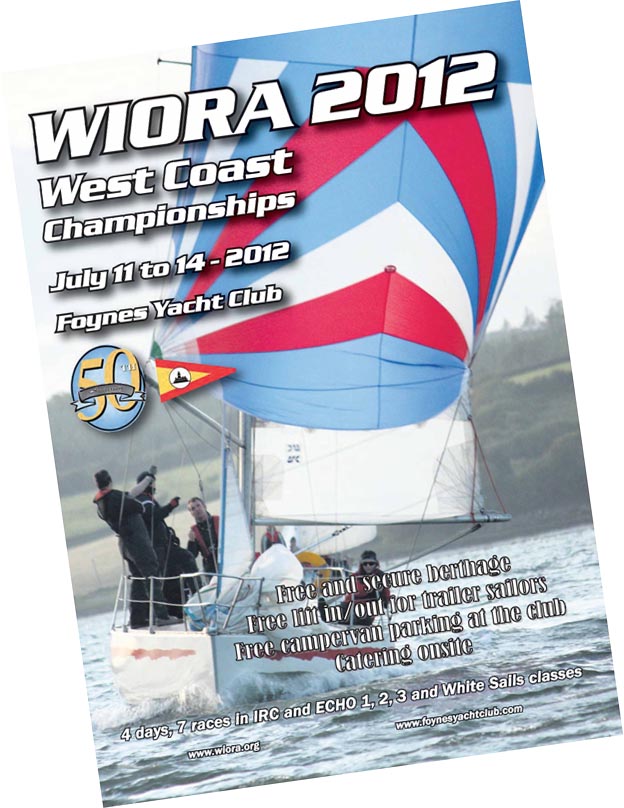
Foynes Flotilla Sails into Riverfest
A north-easterly force 3 wind accompanied the flotilla of yachts that set out from Foynes Yacht Club, who sailed to Limerick city on Saturday afternoon to participate in the Riverfest celebrations.
Daniel Butler co-ordinator took members of the Northside We're Ok youth group from Moyross, who experienced another view of Limerick from the river. John Prendergast and his wife, Maureen, were guests of the club on this cruise.
The yacht's that journeyed were Mweeloon, Whyte Dolphin, Alphara, Inizi, Mariposa, Lady Shanannah, Hello, Kilteery, Kerry Dream, Battle, Dexterity, Coral Dos and Blue Ribbon. Unfortunately, Marengo had to turn back at Aughinish because of engine trouble, the skipper, Pat Finucane and crew changed boats and were transported on on Ger Reidy's, Kilteery.
The sun shone all the way for the sight-seeing journey up this magnificent of stretch of water. The Islands on the Shannon Estuary Cannon and Horseshoe are one of the first sights that can be seen on this stretch of the river. The bauxite smelting factory, Aughinish Alumina and the famous Beeves Rock lighthouse, no more in use gives an added pictureesque setting to this journey.
Further on the right-hand side the entrance into the Deel Boat Club in Askeaton can be seen on the the same shore the pre-Norman Beagh Castle is standing overlooking the Shannon. Ringmoylan, and Pallaskenry can be seen down a mile from the castle, and opposite Rineanna with the famous Shannon Airport, who hosted several US President's who stopped off to visit this country.
As we continued our journey up river the landmark, Carrigagonnell Castle is visible, also the giant chimneys of the Cement factory in Mungret and the giant-sized structure of Thomond Park.
Nearer to the city Riverpoint and the Clarion Hotel, two of the tallest buildings in Limerick, rise up to the blue sky and sunshine of May.
When the flotilla approached the Clarion Hotel, they berthed for an hour to give the public a chance to see these water vessels in their bunting and memorabilia.
After the inspections were it was into Limerick Docks for an overnight stay, and then on to Dolan's Bar and Restaurant for a much sought-after meal.
On Sunday afternoon the junior members of the club, Ailish Chawke, Claire Lowes, Ciara McCormack, Mary McCormack and Anna Lowes gave a display of sailing kayaks and Topaz boats at Howley's Quay to an array of spectators, who came to see the other craft on the water, Jet-Ski's and Clark Clifford's rib who gave the public a trip up and down the Shannon. Members of the yacht club also gave out flyers promoting Foynes Yacht Club.
When the sailing adventures were over it was time to head back down river to Cooleen Point, where a Bar-b-Que followed in the Clubhouse the sailors and their families. Overall, the reaction from everybody was excellent!
Club racing continus every Wednesday evening with first gun at 7pm. On Saturday, May 14 and Sunday, May 15 the Estuary Bell will be raced in Foynes. Two races on Saturday and one of Sunday are pencilled in.
Dublin Boat Show Goes Afloat
The 2011 Dublin Boat Show is going on the water in 2011 if a new approach to promote boating in Ireland takes off. The Irish Marine Federation (IMF) aims to include as many boating activities as possible in the national boat show line up next May in Malahide.
An attendance of up to 17,000 are expected at the Malahide marina venue from May 20 to 22. It will be the first time the national event has taken to the water in its 50 year history.
The world's biggest boat builders Beneteau, Jeanneau, Sea Ray and Sunseeker among others have already signed up for the North Dublin event, according to the IMF.
The organisers are partnering with leading Irish boating organisations to demonstrate the many different aspects of the sport on the water with a weekend schedule of live commentary.
BJ Marine, MGM Boats, Western Marine, HM Yachts in Cork and Viking marine of Dun Laoghaire and Shannon Castle Line in County Clare are among the first of the Irish firms to express interest in the new format as exhibition details circulate through the industry this week.
The aim is to get as many class associations on the water as well as small powerboat racing such as Zzapcats, kayaking and match racing fans to stage short, sharp events on the estuary directly in front of the marina. A timetable of events will be published shortly.
Coastguard and Lifeboat demonstrations are also planned. Technical demonstrations such as glass fibre repairs and engine maintenance are also in the line up.
Despite the coastal setting Ireland's Inland waters will feature prominently too through the Irish Boat Rental Association who will be promoting holidays on the river Shannon and Erne.
Visitors are also expected from Wales and across the Irish Sea region and special offers to both show-goers and exhibitors are being made through an Irish Sea InterReg programme.
The Malahide exhibition site will feature a marine village ashore with over 500 square meters of undercover exhibit space. Show goers will get the chance to talk to the leading lights in the sport before going afloat on the marina where over 100 berths will be available.
"It's a pretty unique site that gives us the best chance to show off the marine leisure industry afloat and ashore. Because its just off the M50 and M1 motorways it means it's also so easy to get to from anywhere in the country. This will be a great day out." said the Federation's Steve Conlon.
More information from Steve Conlon on 087 6472746. Updates here on afloat.ie as the show takes shape.



























